On Saturday, April 13, 2019, at the Fashion Institute of Design and Merchandising (F.I.D.M.) in Downtown Los Angeles, the Black Design Collective (BDC) honored Academy Award-winner costume designer Ruth E. Carter for their inaugural ceremony, in partnership with AT&T. Carter has been the wardrobe mastermind behind many iconic films to date: Do the Right Thing, Malcolm X, The Butler, Amistad, Selma, and Black Panther, for which Carter took home an Oscar. She has 30 years of experience in the film and TV industry with over 40 credits.
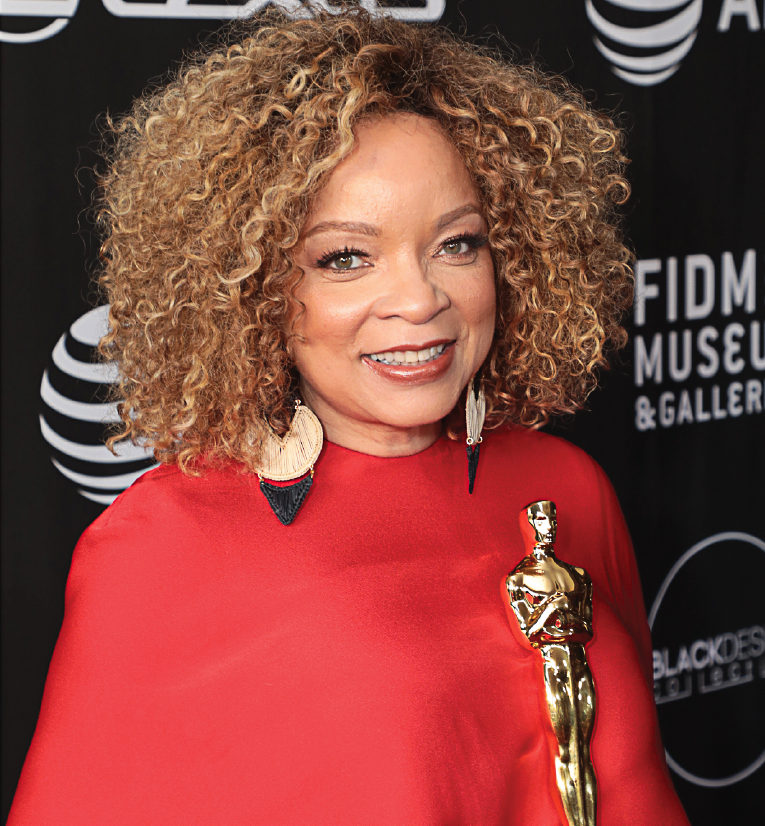
The core mission of BDC is to create a community of Black designers as a form of mentoring and aiding those promising designers’ careers. It all came about when the Neilson Ratings reported that Blacks spend annually upwards of 1.7 trillion dollars, buying clothes and accessories. That’s when the three brilliant, celebrity designers Kevan Hall, T.J. Walker, and Angela Dean, who are also longtime friends, came together to build solid, profitable fashion businesses within the Black community, supporting Black designers through celebrity, e-commerce, and awareness, encouraging Black consumers and affiliates of all races to patronize Black designers.
There are so many components to building a business, and it looks like BDC has it all figured out through their online community of supporters, students, and sponsors. They offer Master Classes for designers and the availability of resources that will guide BDC members to their much-deserved success and businesses. At the launch, a $10,000 scholarship check was awarded to design student Devert Monet Hickman. Not bad for the premier initiative of its kind! Who attended? Gabrielle Union, Beverly Johnson, Perry White, and so many others.
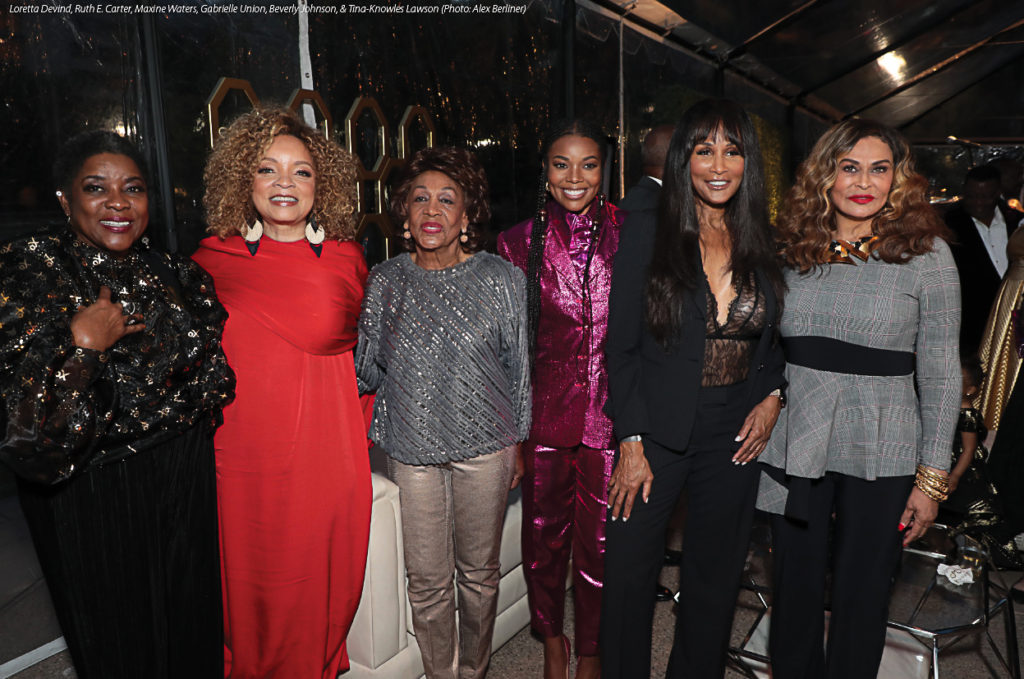
Questions by Kaylene Peoples
Responses by Designer Kevan Hall
Kevan, congratulations on the inauguration of the Black Design Collective, it was a wonderful event and so promising for the community of Black fashion designers.
This was really special because Ruth was our buddy and we started this about a year and a half ago before the movie broke, before anything just because we think she’s amazing. Fast-forward, she’s holding the Oscar on the red carpet. It was a beautiful evening.
It was a beautiful evening and beautiful people. I ran into an old friend whom I hadn’t seen in ages, AC Green!
Oh my Gosh! That’s what was happening all over that room. People were reconnecting with people, bumping into people they hadn’t seen—people in all kinds of industries. The entertainment industry where they bumped into old producers they hadn’t seen . . . it was really cool.
I will say this. It was a very stylish crowd of course, why wouldn’t it be. The exhibit was just breathtaking. And to see the costumes up close like that . . .
I know, those costumes with the intricate beading and work and detail.
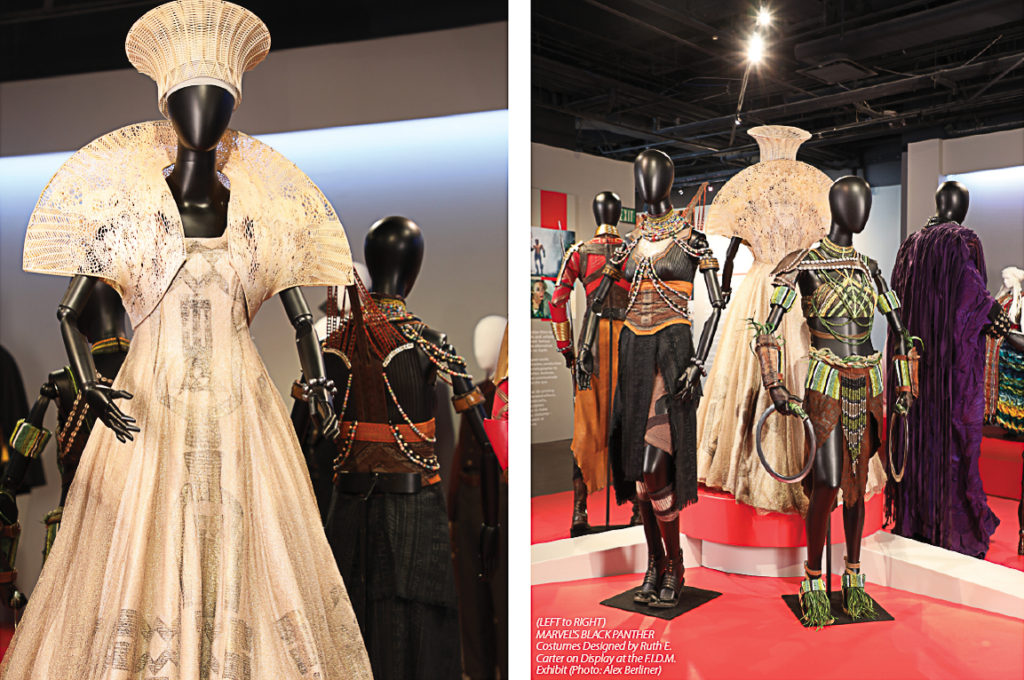
Yes, it just blew me away. Getting up close to the Black Panther costume. It was bigger than life. I wanted to talk to you, because it’s so timely what you’re doing. And there’s a movement going on and you’re a part of it. I really would love to understand more. It’s a foundation, a 501 c3. I want to learn more about it and why you started it. Please fill me in on the background.
Angela Dean and T.J. Walker and I have been friends for many many years. We’ve admired each other’s careers, and each of us in our own lane, building successful businesses. But one occasion we were just hanging out, talking about some of our greatest successes but also some of our challenges. Rolled into those challenges is how to maximize the exposure for our companies. When you have a fashion house and you don’t have a 2-million dollar budget for advertising, sometimes it’s more difficult to compete with those that are pushing out products, pushing out ads in all the magazines, newsprint, etc. So we started talking about how we, not only us, but also how other Black designers need to have their gifts and talents amplified. How we can come together as a collective to talk about our businesses, but also amplify the relevancy of Black design talent globally. Then we started to think about young people that are coming up behind us, and how we might like to come alongside them and help them. I have a lot of students that I mentor. Many of them are from the Fashion Institute. (That is my alma mater.) We started talking about how we could mentor these kids, not only while they’re in school but after they graduate from school. You know the industry is a very difficult industry. So how could we partner with them [the student] and help them find the jobs, keep the jobs, and navigate all the political situations, and all the ups and downs in the working environment. That was one part of our discussion.
A lot of these kids don’t have the finances. They’ll start school for the year and then the money dries up. They don’t get the next scholarship and then they have to drop out. Then they abandon their hopes and dreams. We wanted to see in that third year the debut show, that FIDM has some brown people . . . some beautiful people showing their collections, whether fashion or costumes. In order to make sure that that happened for students that wanted to continue, we wanted to start a scholarship fund, and that’s what we did.
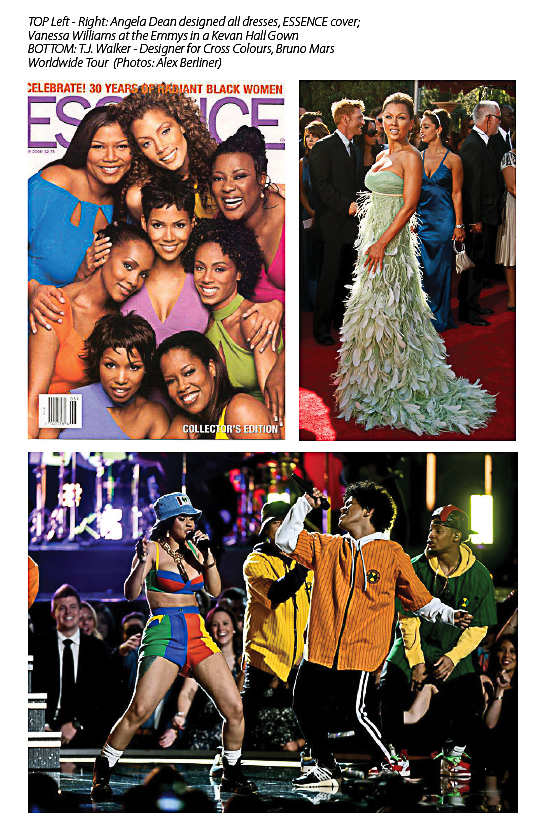
Another idea that we talk about was as Blacks, we spend 1.7 trillion dollars. This was the Nielson Report on fashion and accessories. That’s a huge amount of money—that’s an economy in itself. We don’t need anybody else. We have enough with what we are spending and giving to other businesses, we could start to move that business within our community. So how do we do that? Because the Internet is so prevalent, we could establish or build an e-commerce site, which would be the Black Design Collective E-Commerce or Black Design Collective retail. As a part of our foundation, people could go to that site and see incredible designers who have been more established or are up and coming. [Consumers can] actually purchase “Black” design.
Each designer would do a capsule collection that would go on the site but then the viewer could click on the link that takes them to the designer’s site and they could go to the designer’s entire breadth of work, galleries, and the entire history about the designer. Those are your four initiatives in order to strengthen designers and strengthen our community by circulating those dollars within our community. The other topic was: How do we jumpstart it? Through celebrities . . . and very often the Black celebrity; we have dressed them when they’re moving through the ranks, getting bigger and bigger, and then when they get to a certain point, at times they love to wear some of the brands that do all that advertising. But we are wanting to compel them to consider all the Black talent, all the incredible designers that are working and doing things from casual wear to hip-hop wear to red carpet and gala wear and consider that when they’re doing their press junkets, red carpet TV and movie promos. When they’re out and they ring TMZ, throw on [one of our] designer[s] and be captured by TMZ. That way they can do a shout out, be tagged in an Instagram. It’s really all about promoting the Black designer. We want to have talent (men and women) be conscious of wearing Black designers. That’s the long answer to that question.
That’s what most businesses do anyway, the ones that are successful. This is so well thought out. You can’t just be one thing anymore. You almost have to be branching out so that everyone in the pool actually reaps the benefits of this group that you’re a part of. And I think that it’s incredible. You’re the person I believe to be the spokesman for the celebrity side because everyone knows that you’ve been dressing celebrities since you’ve been designing your own line(s). I think it’s very smart because usually celebrities are the ones that set the trend. I think it’s timely. It needs to happen. Congratulations.
We’re really excited about it and the response has been fantastic. AT&T, Ken McNealy I called who happens to be the Western regional president, he said it was amazing and aligns with their Believe Los Angeles [Initiative]. It’s diversity in entertainment and how to make young people aware that there are other jobs in entertainment that they can consider. They can work in entertainment and be gaffers, script supervisors. There’s a plethora of jobs that are available and can be considered by young black students. So they’re doing a real big push for diversity in entertainment. I was the perfect kind of blend of our thoughts and our missions for them to partner with us.
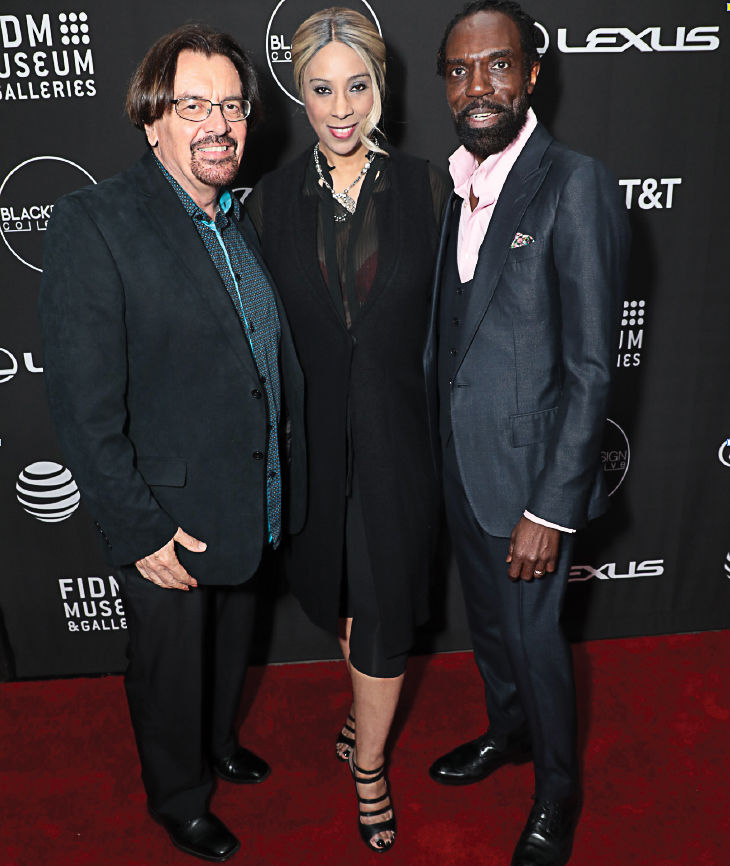
Have you thought about doing a Fashion Week for Black designers?
We have thought about it. I think what we would like to do is maybe take a day within a fashion week and then do a Black Design Collective show within week, highlighting the designers that are on the rise. We have some really great members in our organization. Phenomenal designers that are starting to get nice traction in various genres of apparel. We also have relationships with SBA and some of those types of organizations that are going to help us with education on how to get loans for your businesses—things that have to do with the structure and the foundation to build a business. We’re really trying to be conscious about what it takes. You know, it’s more than a notion. We can all draw a pretty picture or come up with an idea but how do you actually sustain a business? Create the ideas. Do the products. Get it in the market. Get it on somebody’s back and not get it back because the quality is not there. It’s a whole process that we are going through and want to also share with other designers.
I’m looking at this beautiful picture of Devert Monet Hickman. This is the first scholarship check that was awarded?
Ten Thousand Dollars.
How often will you be awarding scholarship money?
At least once a year at our BDC gala, but we want to build our scholarship fund so that as we hear about deserving students that might need some assistance, we want to be able to give them out throughout the year. It doesn’t mean that we want people calling us up asking for money, but we want to carefully look at designers’ needs and also work with the schools. If they have a new designer that shows promise, we’d like to be there for them.
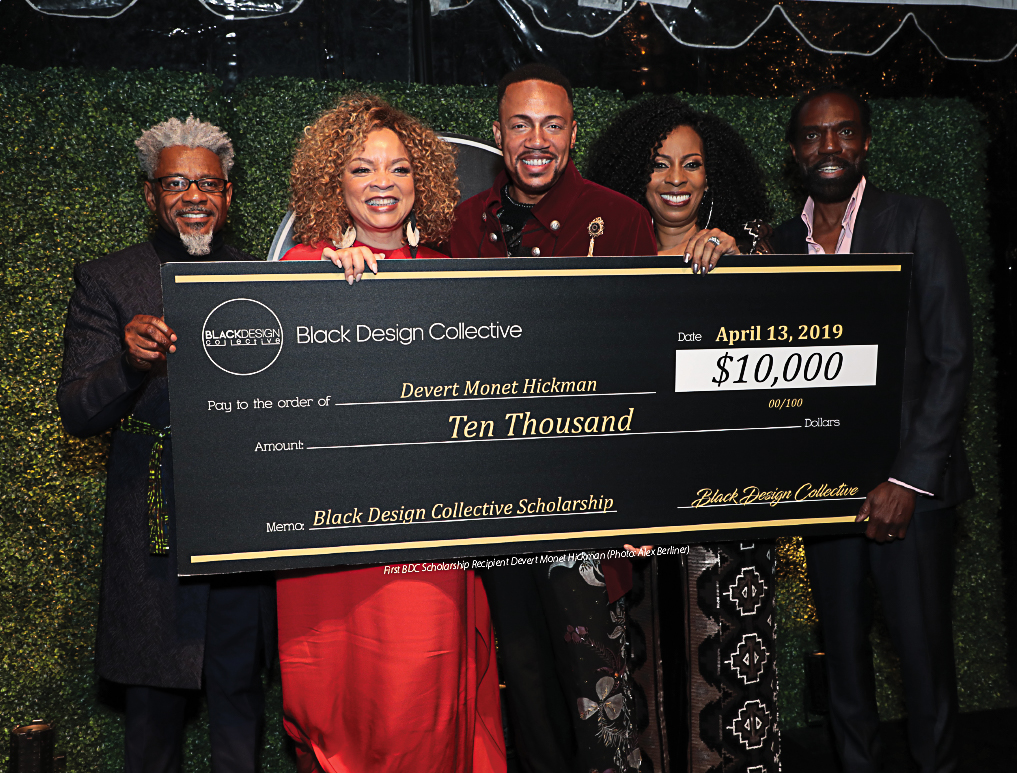
Is there a website? How do people become involved?
On the website people can join and there are several levels: 1. Affiliates are all the businesses that can help support the designers, such as fabric companies, tailor shops, pattern makers, photographers, hair and makeup artists, fashion show producers . . . all those things that help the designer to get his product started, finished, presented, and sold. They can become an affiliate and help to push the process. 2. The student packet is us coming along with them and helping them. There will be workshops, symposiums, Master Classes. Those things will be available within a facility, either at my atelier of at one of the classrooms at the schools, but it will always be filmed and made available live stream and also can be picked up at a later date for peoples’ convenience to revisit what was discussed.
T.J. Walker, co-founder really changed the eye of fashion. He is the creator of Cross Colors and back in the day, Cross Colors was the company that introduced hip-hop fashion, urban street wear to America. He and his partner Mr. Jones pooled together a collection and sold it to major department stores and it was a multi-million dollar corporation. So he’s bringing a lot to the table.
Angela Dean is also a celebrity designer, celebrity stylist. She puts an entire look together for her clients. She has clients like Natalie Cole, Chaka Khan, Yolanda Adams, Halle Berry, so many incredible talent that Angela has dressed. I felt it was important to let everybody know that what we, as the three founding designers, are bringing.
When we were discussing this [BDC], Angela said, “We need to honor Ruth.” She said she woke up in the middle of the night . . . “It was in my soul that we honor Ruth.” We all agreed because we love Ruth and she is all-important to us. We want to celebrate her incredible gift and her body of work. Ruth has designed for over 40 films, including television. More than 30 years in the business, starting with Spike Lee. She grew up in the business. For us it was an exciting moment when she took the Oscar home. We had a celebration here at the atelier. Lots of BDC members and friends, with a flat screen TV, and when Ruth won, the confetti went up and everybody jumped up. It was mayhem in the house.
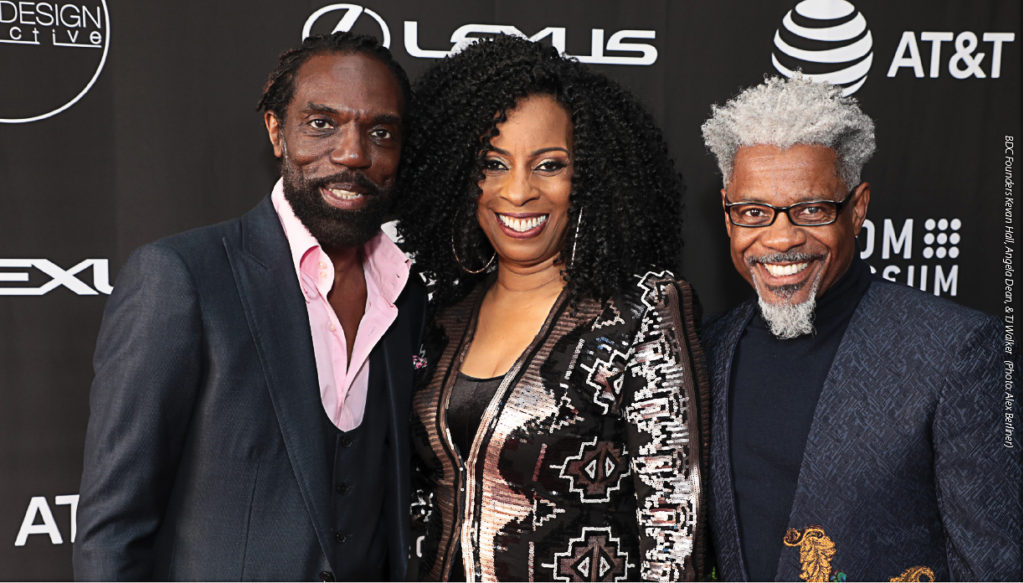
How did the three founding members come together?
We have always been great friends and it started with the statement that I made about that 1.7 trillion dollars. Angela called me and said, this is what I just read… did you get any of that 1.7 trillion dollars this week? I laughed and said NO! “I’m a long way from that 1.7 trillion. She said, “Let’s connect.” Then we called T.J. and from there we started talking about how we can make a change in our businesses, our community and raise awareness.
Joining BDC is easy, just visit their website for two types of memberships
General Membership is $50 per year. The requirements are as follows:
Professional (5 years or more in costume or fashion design); Associate (5 years or less in costume or fashion design); and Affiliate (Photographer, Makeup Artist, Graphic Design, etc.). Student Memberships are $25 per year.
Visit https://www.blackdesigncollective.com.
Read more articles like this in AGENDA Summer 2019 Issue #8!





